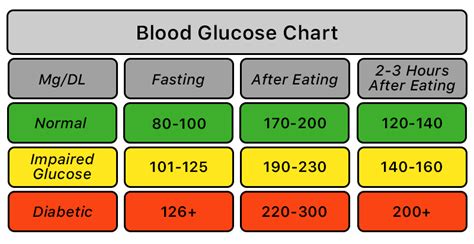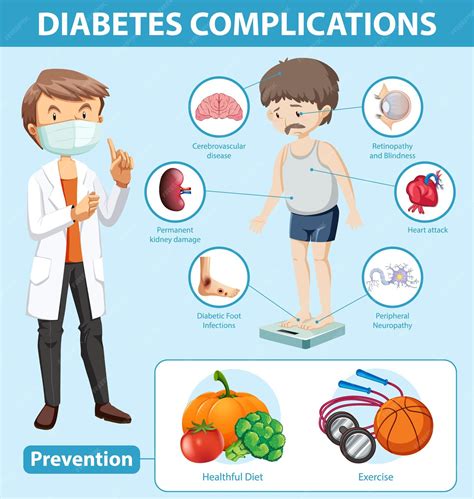Intro
Monitor your health with accurate test blood glucose levels, managing diabetes through regular blood sugar checks, glucose monitoring, and healthy lifestyle habits.
Maintaining healthy blood glucose levels is crucial for overall well-being, particularly for individuals with diabetes or those at risk of developing the condition. Blood glucose levels, also known as blood sugar levels, indicate the amount of glucose present in the blood at a given time. Glucose is a vital source of energy for the body's cells, and its levels are regulated by the hormone insulin, which is produced by the pancreas. When blood glucose levels are not properly managed, it can lead to serious health complications, such as heart disease, kidney damage, and nerve damage.
The importance of monitoring and managing blood glucose levels cannot be overstated. For individuals with diabetes, regular blood glucose testing is essential to ensure that their treatment plan is working effectively. It also helps to identify any potential issues before they become severe. Moreover, even for those without diabetes, being aware of their blood glucose levels can help prevent the development of insulin resistance and type 2 diabetes. By understanding the factors that influence blood glucose levels and taking proactive steps to maintain healthy levels, individuals can significantly reduce their risk of developing diabetes-related complications.
In recent years, there has been a growing awareness of the need to maintain healthy blood glucose levels, driven in part by the increasing prevalence of diabetes worldwide. According to the World Health Organization (WHO), the number of people living with diabetes has quadrupled since 1980, with approximately 422 million adults suffering from the condition in 2014. This alarming trend highlights the need for effective strategies to prevent and manage diabetes, starting with regular blood glucose testing and monitoring.
Understanding Blood Glucose Levels

Blood glucose levels are measured in milligrams per deciliter (mg/dL) or millimoles per liter (mmol/L). The normal range for blood glucose levels is typically between 70 mg/dL and 140 mg/dL, although this can vary slightly depending on the individual and the time of day. When blood glucose levels exceed 140 mg/dL, it can indicate hyperglycemia, a condition characterized by high blood sugar levels. On the other hand, when blood glucose levels fall below 70 mg/dL, it can indicate hypoglycemia, a condition marked by low blood sugar levels. Both hyperglycemia and hypoglycemia can have serious health consequences if left untreated.
Factors Influencing Blood Glucose Levels
Several factors can influence blood glucose levels, including diet, physical activity, stress, and certain medications. A diet high in sugary and refined foods can cause blood glucose levels to spike, while regular physical activity can help lower blood glucose levels by increasing insulin sensitivity. Stress can also affect blood glucose levels, as the body's "fight or flight" response triggers the release of stress hormones like cortisol and adrenaline, which can raise blood sugar levels. Additionally, certain medications, such as steroids and certain psychiatric medications, can increase blood glucose levels as a side effect.Testing Blood Glucose Levels

There are several methods for testing blood glucose levels, including fingerstick testing, continuous glucose monitoring, and oral glucose tolerance testing. Fingerstick testing involves pricking the finger with a lancet to collect a small blood sample, which is then placed on a test strip and inserted into a glucose meter. Continuous glucose monitoring involves wearing a small sensor under the skin that tracks blood glucose levels throughout the day. Oral glucose tolerance testing involves drinking a sugary beverage and then measuring blood glucose levels over a period of time to assess the body's ability to regulate blood sugar levels.
Interpreting Test Results
Interpreting test results is crucial for understanding blood glucose levels and making informed decisions about treatment. The American Diabetes Association (ADA) recommends the following blood glucose targets: less than 130 mg/dL before meals and less than 180 mg/dL after meals. For individuals with diabetes, the goal is to maintain blood glucose levels within these target ranges as much as possible. However, it's essential to work with a healthcare provider to determine individualized targets, as these can vary depending on age, health status, and other factors.Managing Blood Glucose Levels

Managing blood glucose levels requires a comprehensive approach that incorporates lifestyle modifications, medication (if necessary), and regular monitoring. Lifestyle modifications include following a healthy diet, engaging in regular physical activity, and managing stress. A healthy diet should focus on whole, unprocessed foods like vegetables, fruits, whole grains, lean proteins, and healthy fats. Regular physical activity can help improve insulin sensitivity and lower blood glucose levels, while stress management techniques like meditation and yoga can help reduce stress hormones that can raise blood sugar levels.
Lifestyle Modifications
Lifestyle modifications are essential for managing blood glucose levels and preventing diabetes-related complications. The following tips can help: * Eat a balanced diet that is low in sugary and refined foods and high in whole, unprocessed foods. * Engage in regular physical activity, such as walking, cycling, or swimming, for at least 150 minutes per week. * Manage stress through techniques like meditation, yoga, or deep breathing exercises. * Get enough sleep each night, aiming for 7-8 hours, to help regulate blood glucose levels. * Stay hydrated by drinking plenty of water throughout the day.Treatment Options

Treatment options for managing blood glucose levels depend on the individual's specific needs and health status. For individuals with type 1 diabetes, insulin therapy is necessary to regulate blood glucose levels. For individuals with type 2 diabetes, treatment may involve lifestyle modifications, oral medications, or insulin therapy. Oral medications can help improve insulin sensitivity, reduce glucose production in the liver, or slow the absorption of glucose from the gut. In some cases, individuals with type 2 diabetes may require insulin therapy, either alone or in combination with oral medications.
Medications and Insulin Therapy
Medications and insulin therapy can help manage blood glucose levels, but it's essential to work with a healthcare provider to determine the best treatment plan. The following medications are commonly used to treat type 2 diabetes: * Metformin: improves insulin sensitivity and reduces glucose production in the liver. * Sulfonylureas: stimulate the pancreas to produce more insulin. * Pioglitazone: improves insulin sensitivity and reduces glucose production in the liver. * DPP-4 inhibitors: slow the absorption of glucose from the gut and improve insulin sensitivity. * SGLT2 inhibitors: reduce glucose reabsorption in the kidneys and improve insulin sensitivity.Preventing Diabetes-Related Complications

Preventing diabetes-related complications requires a proactive approach that incorporates regular monitoring, lifestyle modifications, and timely medical interventions. The following tips can help:
- Monitor blood glucose levels regularly to detect any changes or abnormalities.
- Maintain a healthy weight through a combination of diet and exercise.
- Manage blood pressure and cholesterol levels through lifestyle modifications and medication (if necessary).
- Get regular check-ups with a healthcare provider to monitor for any signs of diabetes-related complications.
- Stay up-to-date on recommended vaccinations, such as the flu vaccine and pneumococcal vaccine, to prevent illnesses that can exacerbate diabetes.
Diabetes-Related Complications
Diabetes-related complications can be serious and even life-threatening if left untreated. The following complications can occur: * Heart disease: high blood glucose levels can damage blood vessels and increase the risk of heart disease. * Kidney disease: high blood glucose levels can damage the kidneys and increase the risk of kidney failure. * Nerve damage: high blood glucose levels can damage nerves and cause numbness, tingling, and pain. * Blindness: high blood glucose levels can damage the blood vessels in the eyes and increase the risk of blindness. * Amputations: high blood glucose levels can damage nerves and blood vessels, increasing the risk of foot ulcers and amputations.What are the normal blood glucose levels?
+Normal blood glucose levels are typically between 70 mg/dL and 140 mg/dL, although this can vary slightly depending on the individual and the time of day.
How often should I test my blood glucose levels?
+The frequency of testing blood glucose levels depends on the individual's specific needs and health status. Generally, individuals with diabetes should test their blood glucose levels at least 4-6 times per day.
What are the symptoms of hyperglycemia?
+The symptoms of hyperglycemia can include increased thirst and urination, blurred vision, fatigue, and slow healing of cuts and wounds.
How can I manage my blood glucose levels?
+Managing blood glucose levels requires a comprehensive approach that incorporates lifestyle modifications, medication (if necessary), and regular monitoring. This can include following a healthy diet, engaging in regular physical activity, managing stress, and getting enough sleep.
What are the risks of unmanaged diabetes?
+The risks of unmanaged diabetes can include heart disease, kidney disease, nerve damage, blindness, and amputations. It's essential to work with a healthcare provider to develop a personalized treatment plan and manage blood glucose levels effectively.
In conclusion, testing blood glucose levels is a crucial aspect of managing diabetes and preventing diabetes-related complications. By understanding the factors that influence blood glucose levels and taking proactive steps to maintain healthy levels, individuals can significantly reduce their risk of developing diabetes-related complications. If you have any questions or concerns about testing blood glucose levels or managing diabetes, don't hesitate to reach out to a healthcare provider. Share this article with friends and family to help spread awareness about the importance of managing blood glucose levels, and take the first step towards a healthier, happier you.
